の間の選択 自然な不規則なゆるい石のベニヤ 従来のオプションは、美学だけではありません。これは、設置コスト、長期的な耐久性、プロジェクトの全体的な価値に影響を与える決定です。請負業者や住宅所有者が本物で影響を受けたデザインをますます求めているため、これらの重要な違いを理解することは、美しさと実用性のバランスをとる情報に基づいた選択をするために重要です。
自然な不規則なゆるい石のベニヤは、比類のないオーガニックの魅力を提供しますが、その設置には予算に影響を与える可能性のある専門的なスキルが必要です。一方、従来のベニアは、潜在的に低い人件費で一貫性を提供します。各オプションの長所、短所、および隠された考慮事項を分解し、特定のニーズに最適なソリューションを選択するのに役立つ15年間の石造りの専門知識を利用します。
自然な不規則な緩い石のベニヤの解読:美学と信ity性
自然な不規則なゆるい石のベニヤは、素朴な美しさと本物の真正性を組み合わせて、あらゆるプロジェクトにユニークな魅力をもたらします。従来の石のベニヤとは異なり、各ピースは明確で、際立ったユニークな外観を作成します。この記事では、その構成、審美的な魅力、そしてなぜそれが ゲームチェンジャー ホームデザイン用。
“自然な不規則なゆるい石のベニヤは、比類のない真正性を提供し、芸術的要素を真にユニークなデザインのための伝統的な職人技とブレンドします。”
自然な不規則なゆるい石のベニヤの定義:組成と特性
天然の不規則なゆるい石のベニヤは、有機テクスチャーを保存するために、本物の石で作られています。各ピースの形状、サイズ、色は異なり、プロジェクトに手作りの感触を与えます。これは、しばしば均一な寸法を持つ従来のベニアとは対照的です。不規則性は深さとキャラクターを追加し、素朴に理想的です ストーンベニアアプリケーション。
-
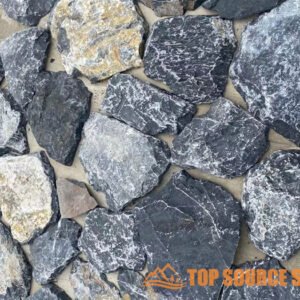 卸売りのゆるいランダムな石の壁のクラッディング
卸売りのゆるいランダムな石の壁のクラッディング -
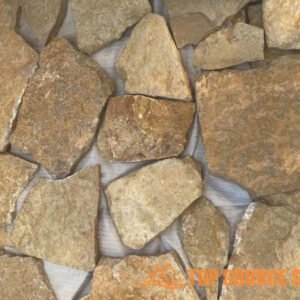 卸売自然のランダムなゆるい石のクラッディング
卸売自然のランダムなゆるい石のクラッディング -
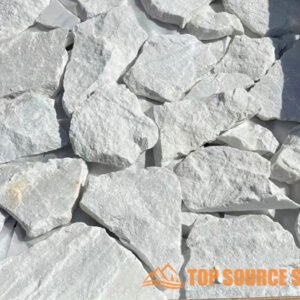 ランダムなゆるい石のクラッディング
ランダムなゆるい石のクラッディング -
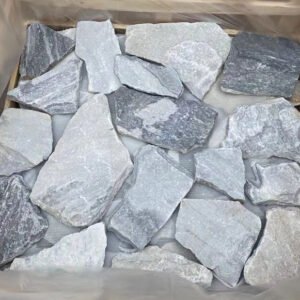 灰色の石英岩ランダムなゆるい壁のcladdding
灰色の石英岩ランダムなゆるい壁のcladdding -
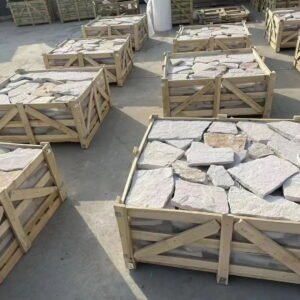 外部の白い砂岩のランダムなゆるい石の壁のクラッディング
外部の白い砂岩のランダムなゆるい石の壁のクラッディング -
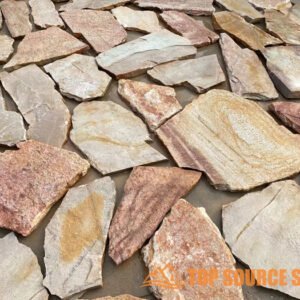 フロアアプリケーション用のナチュラルランダムルーズストーンパネル
フロアアプリケーション用のナチュラルランダムルーズストーンパネル -
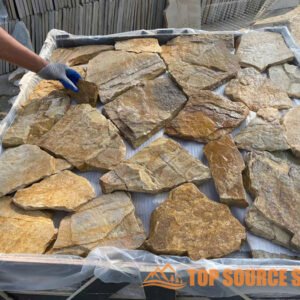 壁の装飾のための自然なゆるい石の壁
壁の装飾のための自然なゆるい石の壁 -
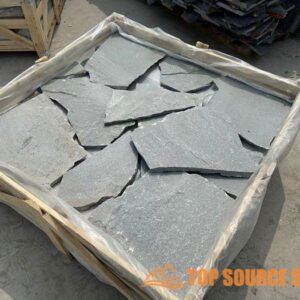 屋内と屋外のための自然なランダムなゆるい石の壁のクラッディングパネル
屋内と屋外のための自然なランダムなゆるい石の壁のクラッディングパネル -
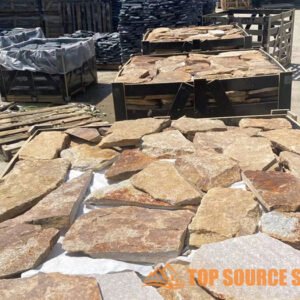 外側の黄色の粗いランダムなゆるい石の壁の覆い
外側の黄色の粗いランダムなゆるい石の壁の覆い -
 工場価格自然の外装ランダムなゆるい石の壁の覆い
工場価格自然の外装ランダムなゆるい石の壁の覆い -
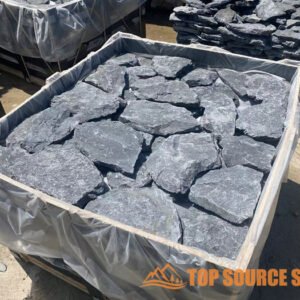 中国工場供給屋外の自然なランダムなゆるい石の壁クラッディングタイル
中国工場供給屋外の自然なランダムなゆるい石の壁クラッディングタイル -
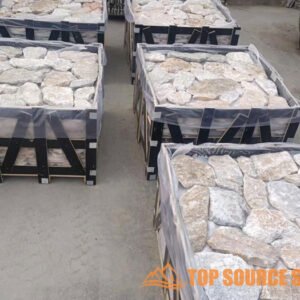 自然な不規則なランダムなゆるい石被覆ベニア
自然な不規則なランダムなゆるい石被覆ベニア -
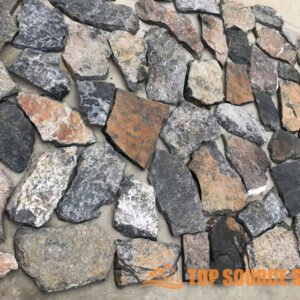 ランダムな外観天然石ゆるい石のベニヤの壁覆い飾り
ランダムな外観天然石ゆるい石のベニヤの壁覆い飾り -
 内部および外壁の覆いのための自然なランダムなゆるい石
内部および外壁の覆いのための自然なランダムなゆるい石 -
 卸売青色のクォーツランダムランダムなゆるい石タイル壁の覆い
卸売青色のクォーツランダムランダムなゆるい石タイル壁の覆い
美的魅力:素朴でユニークな外観を達成します
不均一なエッジと自然なバリエーションは、視覚的に動的な表面を作成します。に使用されるかどうか 天然石のファサードまたは内部のアクセント壁、時代を超越した素朴な雰囲気を提供します。デザイナーはその柔軟性を愛しています。古代の石積みやモダンなミニマリストのスタイルを均等に簡単に模倣できます。
信頼性要因:なぜ天然石が際立っているのか
自然な不規則なゆるい石のベニヤは、石を本物にする欠陥を保持します。製造された代替品とは異なり、それは自然に風化し、時間の経過とともに緑青を開発します。トップソースストーンは、各ピースがそのユニークなキャラクターを維持しながら、厳格な品質基準を満たしていることを保証します。
設計の柔軟性:不規則な石の創造的なアプリケーション
暖炉から庭の壁まで、このベニアは多様な設定に適応します。そのゆるい形式により、カスタムパターンが可能になり、デザイナーが自由に実験することができます。の利益を求めている住宅所有者のために 自然な不規則な石 ベニヤホームデザインでは、多目的な選択です。
比較:自然な不規則と伝統的な石のベニア
| 特徴 | 自然な不規則なゆるい石のベニヤ | 伝統的な石のベニア | インストールの複雑さ | 平方単位あたりのコスト。 ft。 |
|---|---|---|---|---|
| 美的 | 素朴でユニークなバリエーション | 均一で一貫性 | 適度 | $ 12- $ 18 |
| 耐久性 | ハイ(自然風化) | ハイ(製造) | 低い | $ 8- $ 14 |
| メンテナンス | 最小限(自然に年齢) | 低(カラー安定) | n/a | n/a |
| カスタマイズ | ハイ(不規則な形状) | 限られた(事前カット) | 高い | 変化します |
| プロジェクトフィット | 豪華でハイエンドのデザイン | 予算に優しい均一性 | 低い | $ 6- $ 10 |
信頼性を優先するプロジェクトの場合、自然な不規則なゆるい石のベニアは比類のないものです。美しさと耐久性の融合は、目の肥えたクライアントにとってプレミアム選択となります。トップソースストーンの専門知識は、妥協せずに品質を保証し、グローバル市場向けにカスタマイズされたソリューションを提供します。
従来の石のベニア:一貫性と費用対効果の調査
従来の石のベニヤは、自然な不規則なオプションに代わる実用的な代替品を提供し、均一性と予算に優しいソリューションを提供します。標準化された製造プロセスにより、信頼性を提供します 石の壁のクラッディング インストールが簡単で、手頃な価格です。これにより、従来の石のベニヤは、厳しいスケジュールや住宅所有者を扱う請負業者にとって特に魅力的です 不規則なベニヤを従来の石のオプションと比較するコスト。
“従来の石のベニヤは、寸法精度とコスト効率を組み合わせて、迅速な設置と予測可能な結果を必要とするプロジェクトに最適です。”
伝統的な石のベニヤの定義:材料と製造プロセス
従来の石ベニアは、通常、一貫した形状とサイズを作成する金型を使用して製造されています。とは異なり 天然石、これらの建物のファサードベニア製品は、均一な厚さと色の分布を提供します。トップソースストーンの生産技術により、各パネルが自然ストーンの美学を維持しながら、正確な仕様を満たすことを保証します。
コスト分析:先行投資と長期的な価値
従来のベニアの標準化された生産は、不規則な石と比較して材料コストを削減することになります。均一な部分では熟練労働が少ないため、設置の節約はさらに価値を追加します。トップソースストーンを含む多くのメーカーは、投資を保護する延長保証を提供しています。
設置の利点:単純さと人件費の削減
従来の石ベニアの一貫した寸法は、設置時間を大幅に削減します。請負業者は、パズルピースのようにパネルが合う予測可能なワークフローを高く評価しています。この効率はそれを作ります 簡単です 時間がお金に等しい大規模な商業プロジェクトの場合。
一般的なスタイルとアプリケーション:設計の汎用性
製造された起源にもかかわらず、伝統的なベニヤには、さまざまな石の種類を模倣している多くのスタイルがあります。洗練された現代的なデザインから古典的なレンガ造りのパターンまで、標準化された生産の利点を維持しながら、多様な建築ニーズに適応します。
従来の石ベニア仕様
| 特徴 | 標準パネルサイズ | カラーオプション | 重量(平方フィートあたり) | 保証期間 |
|---|---|---|---|---|
| 厚さ | 1-1.5″ | 12標準 | 12〜15ポンド | 20年 |
| パネル寸法 | 24″ x 8″ | 8カスタム | 14-18ポンド | 25年 |
| カバレッジエリア | 1.33平方フィート | n/a | n/a | n/a |
| インストール時間 | 40%速い | n/a | n/a | n/a |
| コスト削減 | 30-40% | n/a | n/a | n/a |
効率と予算を優先するプロジェクトのために、従来の石のベニヤは例外的な価値を提供します。トップソースストーンの品質管理により、これらの費用対効果の高いソリューションが耐久性や外観に妥協しないことを保証し、住宅用および商業用アプリケーションの両方で賢明な選択にします。
設置対決:自然な不規則なベニヤ
石ベニアの設置は、自然な不規則なオプションと従来のオプションの間で大きく異なり、それぞれが異なるアプローチとスキルセットを必要とします。この比較は、両方のタイプの準備、技術、および問題解決における重要な違いを強調しています ストーンウォールクラッドの設置。
“Proper installation techniques make all the difference between a mediocre stone facade and a stunning architectural feature that lasts decades.”
Preparing the Surface: Essential Steps for Both Veneer Types
Both veneer types require a clean, stable substrate, but irregular stone cladding demands more meticulous preparation. Traditional panels can accommodate minor imperfections, while loose stone requires perfectly leveled surfaces. Waterproofing and proper drainage considerations are critical for exterior applications of both types.
Installation Techniques: Loose Stone vs. Traditional Panels
The installation of loose stone veneer step by step guide begins with dry layout planning, allowing for natural color and texture distribution. Traditional panels install like tiles with consistent grout lines. While panels can cover 10-15 sq. ft. per hour, irregular stone may take 2-3 times longer due to individual fitting.
Addressing Corners and Edges: Precision and Aesthetic Considerations
Traditional veneer includes pre-fabricated corner pieces for clean transitions. Irregular stone requires skilled masons to create natural-looking corners. The make-or-break moment comes when blending field stones with specially cut pieces for edges and openings.
Problem-Solving: Common Installation Challenges and Solutions
Weight distribution poses the biggest challenge with irregular stone, requiring careful structural assessment. Traditional panels may show repetitive patterns if not properly randomized during installation. Top Source Stone provides detailed installation guides and technical support for both methods.
Installation Comparison Table
| 要素 | Natural Irregular | Traditional | 必要なツール | スキルレベル |
|---|---|---|---|---|
| Time per 100 sq. ft. | 25-40 hours | 8-12 hours | Masonry tools | 専門家 |
| Mortar Type | Type S | シンセット | Notched trowel | 中級 |
| Waste Factor | 15-20% | 5-8% | Cutting tools | n/a |
| Structural Support | Required | 最小限 | Leveling system | n/a |
| Finish Quality | Artisanal | Uniform | Grouting tools | n/a |
Choosing between these installation methods depends on project goals, budget, and desired aesthetics. While traditional veneer offers efficiency, natural irregular stone provides unparalleled authenticity. Top Source Stone’s technical team can advise on the optimal approach for specific applications.

Cost Comparison: Breaking Down the Budget for Each Veneer Option
Understanding stone veneer cost is crucial when choosing between natural irregular and traditional options. This analysis covers material expenses, labor, and long-term value to help you make an informed decision about loose stone veneer cost versus manufactured alternatives.
While 天然石 facade price may be higher initially, its durability and aesthetic appeal often deliver better long-term value than traditional veneer options.
材料コスト:天然石の調達と製造されたベニア価格設定
自然な不規則な石は通常、1平方フィートあたり12〜18ドルかかりますが、従来のベニアの範囲は8〜14ドルです。トップソースストーンの直接ソーシングモデルは、ディストリビューターと比較して80〜100%のコスト削減を提供し、天然石をよりアクセスしやすくします。
人件費:設置費用の見積もり
インストールは、プロジェクトの総費用の40〜60%を占めています。従来のベニアの均一なパネルは、2〜3倍高速に設置され、1平方フィートあたり5〜8ドルを節約します。ただし、熟練したメーソンは不可欠です 天然石の適切な設置。
メンテナンスと修理費用:長期的な財政的影響
Natural stone requires minimal maintenance and ages gracefully, while traditional veneer may need color touch-ups over time. Our stone veneer cost calculator shows natural options often break even within 7-10 years due to lower upkeep.
ROI Analysis: Considering Resale Value and Aesthetic Appeal
Homes with natural stone facades typically command 3-5% higher resale values. The wow factor of authentic stone creates curb appeal that manufactured products struggle to match.
Cost Comparison Table (Per 100 sq. ft. Project)
| Cost Factor | Natural Irregular | Traditional | 10-Year Maintenance | ROI Potential |
|---|---|---|---|---|
| 材料 | $1,200-$1,800 | $800-$1,400 | $100-$200 | 8-12% |
| Labor | $2,500-$3,500 | $1,200-$1,800 | n/a | n/a |
| Warranty | Lifetime | 20-25 years | n/a | n/a |
| Total | $3,700-$5,300 | $2,000-$3,200 | $300-$500 | 3-5% |
While traditional veneer offers immediate savings, natural stone provides superior longevity and value appreciation. Top Source Stone’s wholesale programs make premium stone accessible for projects of all scales.
Making the Right Choice: Factors for Contractors and Homeowners to Consider
Choosing stone veneer requires careful consideration of aesthetics, budget, and long-term value. Whether you’re considering a natural stone facade or building facade veneer, understanding these key factors ensures you select the best stone veneer for home exterior projects.
“The right stone veneer balances immediate project needs with lasting value, creating spaces that remain beautiful for decades.”
Project Requirements: Defining Your Aesthetic Vision and Functional Needs
Natural irregular stone offers unmatched authenticity, while traditional veneer provides uniform precision. Consider architectural style, climate conditions, and structural requirements when choosing stone veneer.
Budget Constraints: Balancing Cost with Quality and Longevity
While traditional options save 20-30% upfront, natural stone often proves more cost-effective long-term. Top Source Stone’s direct pricing makes premium materials more accessible for all project sizes.
Installation Capabilities: Assessing Your Skill Level or Hiring Professionals
の make-or-break factor is installation expertise. Traditional panels suit DIYers, while natural stone requires skilled masons. We provide detailed installation guides for both options.
Long-Term Maintenance: Understanding Upkeep Requirements
Natural stone ages gracefully with minimal care, while manufactured veneer may need periodic maintenance. Consider your willingness for future upkeep in your decision.
Decision-Making Guide Table
| 要素 | Natural Irregular | Traditional | Ideal For | Consultation Needed |
|---|---|---|---|---|
| Budget | Higher initial | Lower initial | Budget-conscious | Yes |
| インストール | Professional | DIY-friendly | First-timers | オプション |
| 耐久性 | 50+ years | 25-30 years | Long-term | Yes |
| カスタマイズ | 高い | 適度 | Unique designs | Yes |
Still unsure? Our experts at Top Source Stone can guide you through choosing stone veneer that perfectly matches your project’s needs and vision. Contact us today for a personalized consultation.

結論
私が在籍していた頃から トップソースストーン、私は、自然な不規則なゆるい石のベニヤと従来のオプションのいずれかを選択することで、プロジェクトの中核的なニーズを理解することになることを学びました。 It’s not just about picking pretty stones;美学と長期的な価値のバランスをとることです。
誰かがクライアントが価値を最大化するのを支援することに焦点を合わせているので、正しい選択はあなたのビルドの外観と寿命の両方を強化すると信じています。私たちは、本物の石が不動産の魅力と耐久性をどのように高めることができるかを直接見てきました。
最終的に、天然石の素朴な魅力であろうと、伝統的なベニヤの一貫した効率に行くかどうかにかかわらず、それは “スイートスポット” それはあなたのビジョンと予算と一致します。あなたのプロジェクトが永続的な成功であることを確認しましょう。
よくある質問
Q1:自然な不規則なゆるい石のベニアとは何ですか?
A1: 天然の不規則なゆるい石のベニヤは、天然石の薄いスライスで構成される一種のクラッディングであり、形状とサイズが不規則で、素朴な美学のために壁や表面を覆うために使用されます。
Q2:自然な不規則なゆるい石のベニアを使用することの利点は何ですか?
A2: 自然な不規則なゆるい石のベニヤは、耐久性、信頼性、そして自然の風景を模倣する時代を超越した美しさを提供し、建物の建築的優雅さを高めます。
Q3:天然石のベニアは、従来のベニアと比較してどうですか?
A3: 天然石のベニヤは、その不規則な形と天然素材のために、より本物の美学を提供しますが、従来のベニヤはより均一性と設置の容易さを提供する可能性があります。
Q4:ゆるい石のベニアの一般的なアプリケーションは何ですか?
A4: ゆるい石のベニアは、外部の壁の被覆、暖炉、ファサードの装飾で一般的に使用され、オーガニックで堅牢な外観を提供します。
Q5:ゆるい石のベニアを取り付けるのはどれくらい難しいですか?
A5: ゆるい石のベニヤを設置するには、不規則な石を適切に装着し、石が取り付けられたら隙間を迫撃ずに合わせるために石積みのスキルが必要であり、安定性と審美的な魅力を確保します。
Q6:ゆるい石のベニアは再販価値を改善できますか?
A6: Yes, using high-quality natural stone veneers can enhance the exterior appearance and authenticity of a building, potentially improving its resale value due to increased curb appeal.
Q7: What maintenance is required for natural stone veneer?
A7: Natural stone veneers should be regularly cleaned with a soft brush or mild detergent, and any cracks or loose pieces should be repaired promptly to maintain their aesthetic and structural integrity.
Q8: What distinguishes irregular stone cladding from other types?
A8: Irregular stone cladding is distinguished by its unique shapes and varied sizes that provide a natural, rustic look, unlike more uniform cladding options that create a consistent pattern.
外部リンク
- Natural Loose Stone Veneer Irregular Shape Beige Color JRSR-015
- 自然な不規則なランダムなゆるい石被覆ベニア
- カルパティアのモザイクスタイル素朴な不規則な薄い石のベニア
- ランダムな外部天然石緩い石のベニヤの壁のクラッディング
- 壁のためのテラフォームストーンクラッディング
- プレミアム薄いベニア天然石
- ランダムなルースストーンクラッドの取り付けに関するヒント
- ノースウッドブラウン不規則な天然石のベニア


